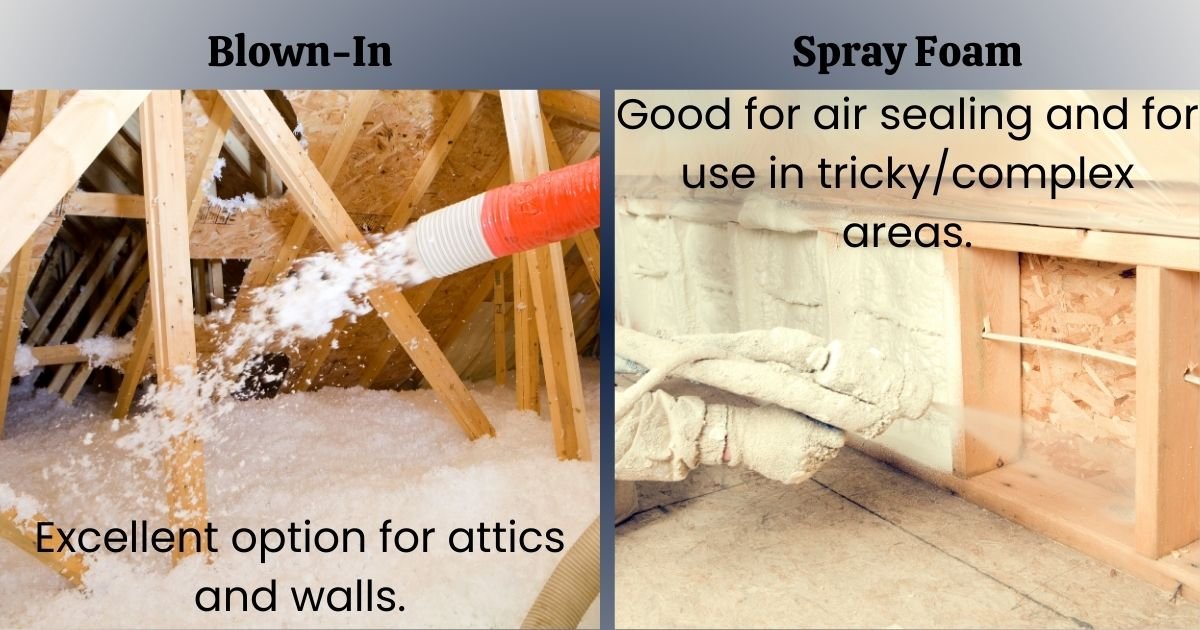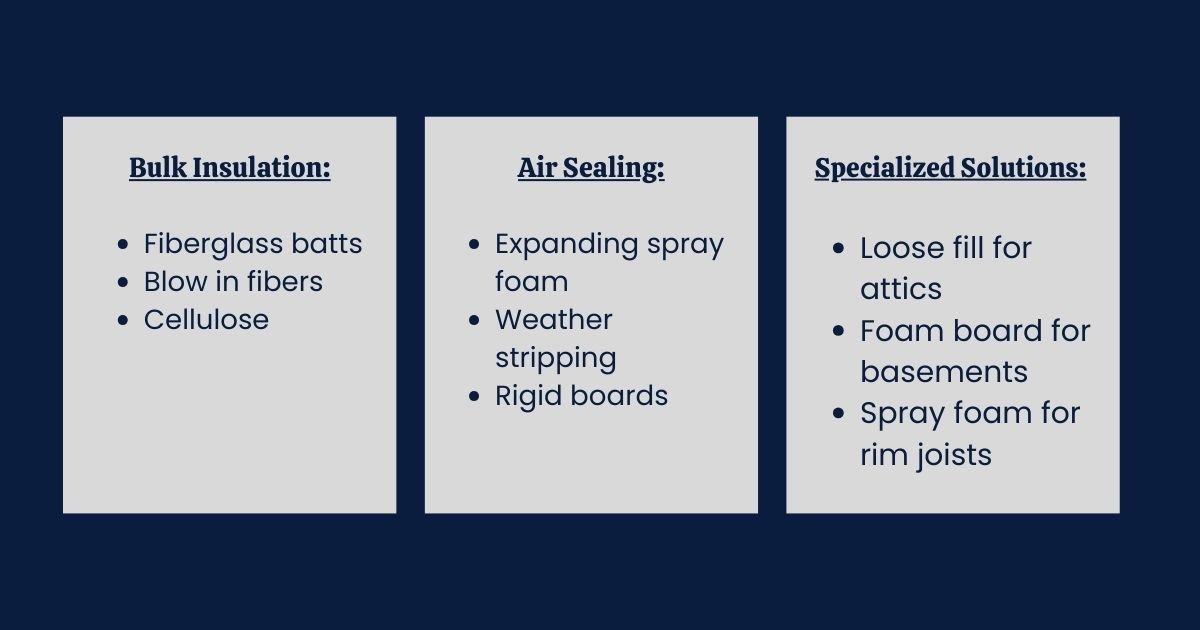The Insulation Tax Credit, Explained: Your Guide to Energy Savings in 2024
Ever feel like you're throwing money out the window every time you pay your energy bill? You might be right! But here's the good news - the federal government wants to help you fix that. The insulation tax credit program could put up to 30% of your insulation material costs back in your pocket. Let's break down everything you need to know about making your home more comfortable while keeping more of your hard-earned money in your wallet.
What is the Insulation Tax Credit?
Think of your home like a drink thermos - the better insulated it is, the longer it keeps the temperature just right. The energy efficient home improvement credit makes upgrading your home's "thermos" much more affordable. As part of the Inflation Reduction Act, this program offers homeowners a substantial 30% credit on qualifying insulation materials, up to $1,200 annually on existing structures (new constructions & rentals do not apply).
Key Points About the Tax Credit:
It's part of the broader energy efficient home improvements initiative
Covers 30% of material costs for qualifying insulation and air sealing
Annual limit is $3,200 with no lifetime maximum through 2032
Available for primary homes within the United States (not rentals or new construction)
Must meet current IECC standards (international energy conservation code).
Qualifying for the Tax Credit
Not all insulation projects are created equal, but most typical bulk insulation products qualify for this credit. Here's what you need to know:
Eligible Materials Include:
Fiberglass batts and rolls
Blown-in cellulose
Spray foam insulation
Air sealing materials
Weather stripping
Rigid foam boards
Requirements for Eligibility:
Must be your primary home
Has to be an existing home, not new construction
Materials need a manufacturer's certification statement
Installation must meet current energy efficiency standards
The Inflation Reduction Act and Your Home
The residential clean energy credit is just one part of a larger push toward home energy efficiency. The Inflation Reduction Act has revolutionized how homeowners can save on energy-smart upgrades. Think of it as a triple win - you save money, your energy upgrades increase comfort, and help the environment.
Understanding Available Credits:
Energy efficient home improvements credit (up to $1,200/year)
Additional credits for heat pumps (up to $2,000)
Possible combination with state and local incentives
Getting Started with Energy Efficient Home Improvements
Before diving into any insulation upgrades, smart homeowners start with a home energy audit. Think of it as a medical check-up for your house - identifying exactly where your home is losing energy and money.
The Home Energy Audit Process
A professional audit helps identify:
Existing air leaks
Current insulation effectiveness
Areas of energy waste
Priority improvement zones
Remember: You can claim up to $150 for a home energy audit under the energy efficient home improvement credit!
Types of Qualifying Improvements: Finding Your Perfect Insulation Match
Ever walked into a home improvement store's insulation aisle and felt overwhelmed by the choices? You're not alone! Just like choosing the perfect coffee blend, picking the right insulation type for your tax credit-eligible project requires understanding your options. Let's break down the cozy world of qualifying insulation materials in a way that won't put you to sleep (unlike your well-insulated bedroom!).
Think of insulation like your home's winter wardrobe - different materials work better in different spaces, just like you wouldn't wear a swimsuit in a snowstorm. The energy efficient home improvement credit covers a variety of insulation materials, each with its own superpowers for keeping your home comfortable. Let's explore your options:
Primary Insulation Types
Claiming Your Insulation Tax Credit: Your Step-by-Step Guide to Savings
Think getting your insulation tax credit is like solving a puzzle? Don't worry! While the tax code might seem as dense as that new insulation you just installed, we'll break down the process into bite-sized pieces that are easier to digest than your tax forms.
Getting Started: The Documentation
Before you can claim your energy efficient home improvement credit, you'll need to gather your supporting documents. Think of this as creating your "savings scrapbook":
Detailed Product Receipts Must Show:
Itemized material costs (separate from labor)
Purchase date
Product descriptions
Manufacturer information
Installation location (your primary home address)
Manufacturer's Certification Statement:
Confirms products meet energy efficient home improvements requirements
Usually found on product packaging or manufacturer's website
Save digital copies - websites change!
Before and After Photos (Recommended):
Document the installation process
Show completed work
Include any relevant energy ratings or labels
Filing Process: Making It Official
Get Your Hands on Form 5695:
Download directly from IRS.gov
Request from your tax preparer
Find in major tax preparation software
Filling Out Form 5695:
Navigate to the "Residential Energy Credits" section
Enter material costs in Part II, line 17
Calculate your 30% credit (up to $1,200)
Transfer the amount to your Form 1040
Where the Numbers Go:
Your credit appears on Schedule 3 of Form 1040
Flows to line 5 of your 1040
Reduces your tax liability dollar-for-dollar
Pro Tips for Maximum Success:
Keep both digital and physical copies of all documents
Create a dedicated folder for your tax credit paperwork
Take photos of paper receipts (they fade!)
Note: Electronic receipts from major retailers count too
Common Pitfalls to Avoid:
Don't include labor costs in your credit calculation
Ensure installations completed during the tax year
Double-check math on Form 5695
Verify your home qualifies as your primary residence
Need Help? Resources Available:
IRS Website: www.irs.gov/form-5695
Energy Star Website: www.energystar.gov/taxcredits
Your Tax Professional
Our Expert Team (We love talking tax credits!)
Remember: Unlike an uninsulated attic, there's no reason for this process to leave you cold and confused. Our team can help guide you through the documentation process from start to finish, ensuring you don't leave any money on the table.
But Wait! There’s More: Maximizing Your Savings
Here's a little secret that savvy homeowners know: the insulation tax credit is just the beginning of your savings journey! Let's look at a tale of two homeowners to see why.
A Tale of Two Insulation Projects
Meet Bob and Larry, neighbors with the same energy efficiency goals. Bob was eager to save money and rushed into his insulation project, claiming only the basic tax credit. Larry, however, did his homework (and called us first!).
Bob's Approach:
Rushed to insulate everything at once
Maxed out his annual credit in one go
Missed local utility rebates
Didn't check for manufacturer incentives
Total Savings: $1,200
Larry's Strategy:
Planned projects across two tax years
Stacked federal tax credits with utility rebates
Applied for state energy efficiency programs
Found seasonal manufacturer rebates
Total Savings: Over $3,500!
Combining Credits and Rebates: The Secret Sauce
Like Larry discovered, think of energy efficient home improvements like a layered cake - each program adds another delicious layer of savings to your plate. And just like a master chef, we'll show you how to combine these ingredients for the perfect money-saving recipe.
Here's how to layer your savings:
Federal tax credits (up to $1,200 annually)
State energy efficiency programs (varies by location)
Local utility rebates (often immediate savings)
Manufacturer rebates (seasonal offers)
Special financing programs (for qualified buyers)
Planning Your Projects: Timing Is Everything
Remember Bob and Larry? Bob rushed to do everything at once and maxed out his maximum annual credit and limit. Larry, though? He strategically planned his improvements across two tax years, effectively doubling his tax credits. Be like Larry! Here's how to time your projects perfectly:
Frequently Asked Questions
People often ask us about navigating tax credits and energy efficiency. Here are the most common questions:
Is Insulation a Tax Write-Off?
Yes! The energy efficient home improvement credit allows you to write off 30% of qualifying material costs, up to $1,200 annually through 2032.
What About Installation Costs?
While labor costs aren't covered by the tax credit, material costs are. This includes:
Primary insulation materials
Air sealing products
Required fasteners and accessories
Can I Claim Credits for Multiple Properties?
The insulation tax credit applies to your primary residence only. However, other property owners should explore business energy incentives.
Taking Action: Next Steps
Ready to start saving? Here's your action plan:
Schedule a professional home energy audit
Identify priority areas for improvement
Get quotes from qualified contractors
Plan your project timeline
Keep detailed records for tax season
Why Act Now?
Energy costs continue rising
Tax credits are guaranteed through 2032
Improve home comfort immediately
Increase your property value
Reduce your carbon footprint
Contact Us for Expert Help
Don't navigate the energy efficient home improvement credit alone. Our team of experts can help you:
Maximize available tax credits
Choose the right insulation solutions
Ensure proper installation
Maintain required documentation
Remember, proper insulation isn't just about tax credits - it's about serious energy improvements and creating a more comfortable, efficient home for years to come. Contact us today to learn how we can help you make the most of available incentives while creating the comfortable, energy-efficient home you deserve.







